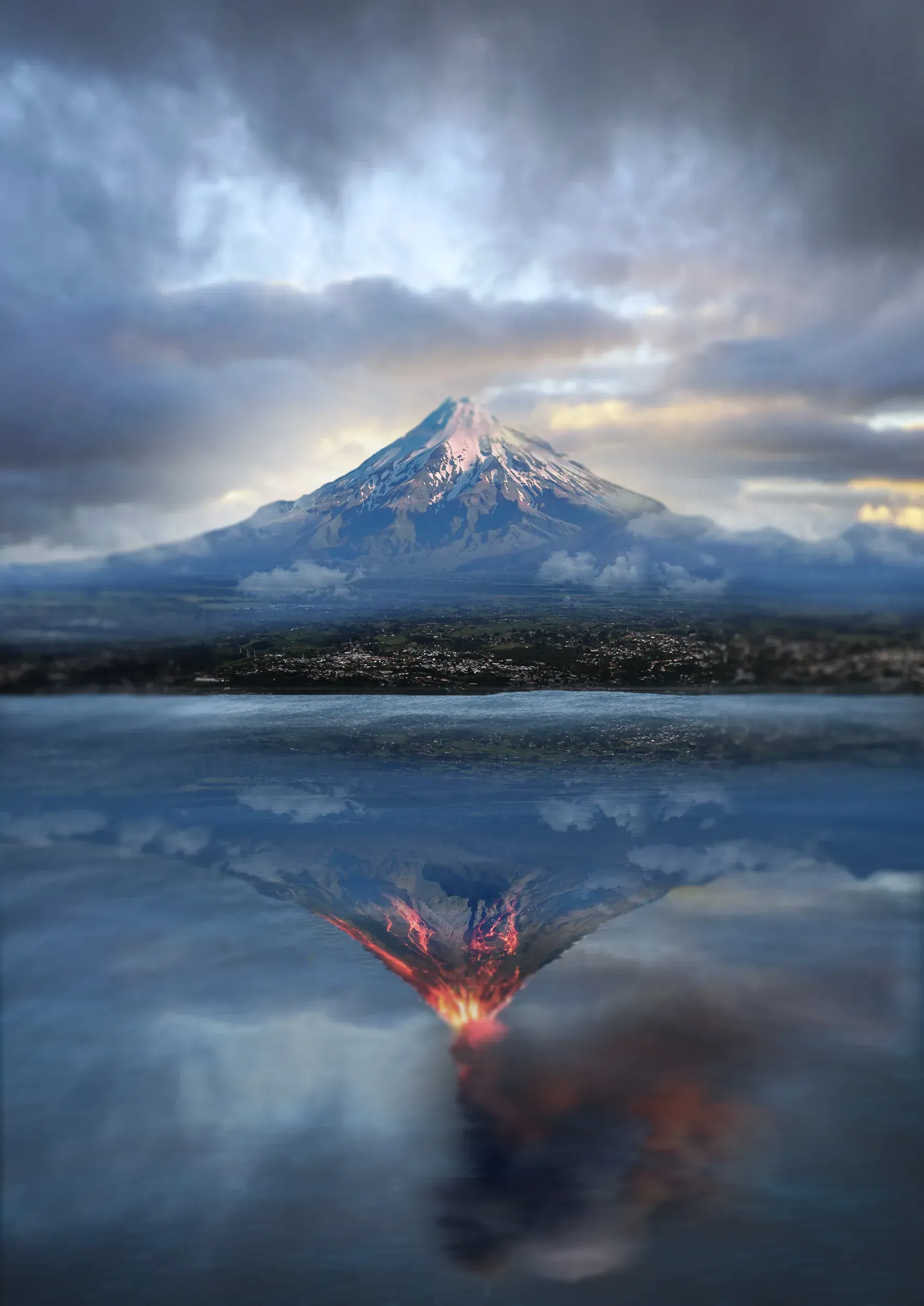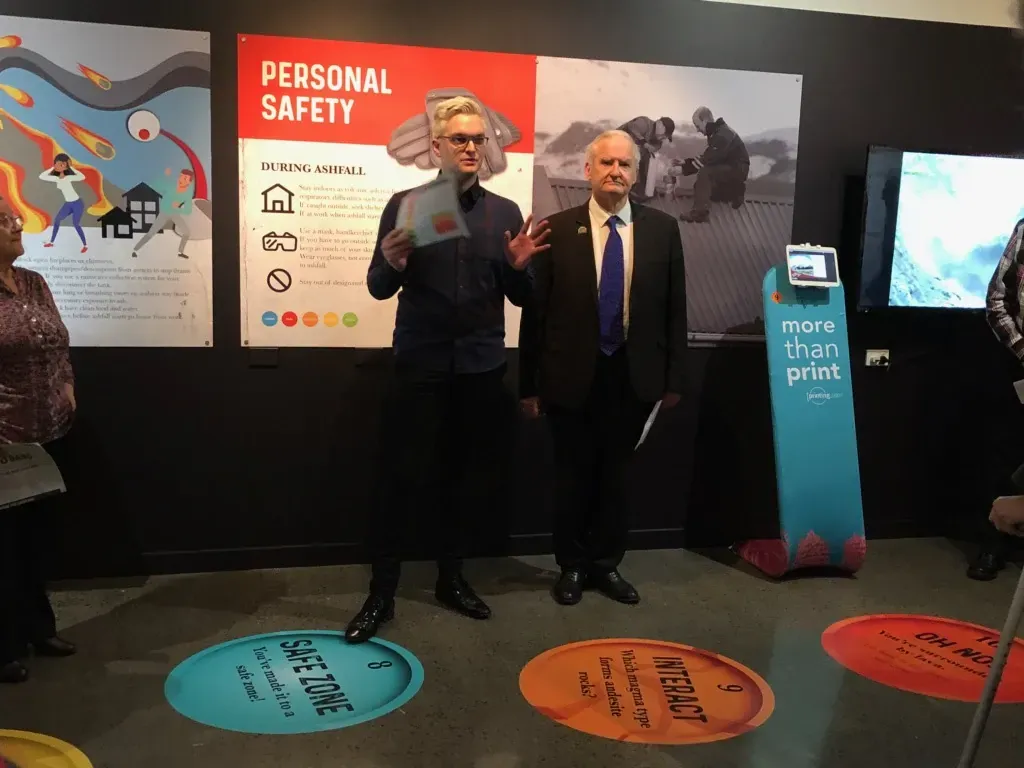The Big Bang exhibition explores effects of Mt. Taranaki erupting
Written by

A Māori warrior with a taiaha is helping Taranaki residents take the threat of a volcanic eruption seriously. A dramatic exhibition exploring how life in Taranaki would be affected by the mountain erupting opened on Thursday at Aotea Utanganui Museum of Pātea, ironically one of the safest places in the region. The Big Bang exhibition mixes science with survival advice, geology and an interactive game. In a video, a Maori warrior, played by Pātea kapahaka tutor Andy Maruera, takes the role of the Maunga, moving from pre-eruption calm with a tewhatewha (long handled fighting staff) to menacing with a taiaha (spear), as red hot lava swirls behind him.
"We've tried to create an environment where people can learn about what is potentially quite a dry subject. We're engaging them in a playful way," district archivist Cameron Curd said. A large map in traffic light colours illustrates the risk in each area of the region. New Plymouth, Oakura and Bell Block are in the green zone, protected by the Pouakai and Kaitake ranges. Life might get a little uncomfortable but with resilience an eruption is survivable in these areas. The news is less cheery for the rest of the province. A red zone extends over the national park and a little beyond, where people who are not evacuated smartly will likely die. More than half the province is within a horseshoe-shaped orange zone that encompasses Waitara to Bell Block, Okato, Opunake, Kaponga and Manaia, Inglewood, Stratford and Eltham.
Significant ground-based flows could reach these areas and some people would die there. Evacuation would occur from these areas once the red zones were cleared. Outside the orange zone is a yellow area, which takes in Urenui, Toko, Hawera and Pātea, where daily life could become uncomfortable due to ash deposits, but people are unlikely to die. But even areas where lava and lahars - ash and debris mixed with water and mud - are unlikely to reach, the ash spewing into the air from the erupting maunga will cover everything, coat roads and roofs, and damage engines and electronic equipment, Taranaki Regional Councillor Neil Walker said.
Farmers would be faced with feeding the region's 500,000 cows after ash coated paddocks and blocked waterways, and caused breathing difficulties for animals as well as people. An eruption during winter would mean a lot of melted snow and mud would add to the debris and ash gushing down the mountain. "Imagine that all mixed with ash flowing down the valleys. If it gets wet, it sets like concrete," Walker said. However, he was philosophical about the risk of eruption. "You can't sit there in your rocking chair and worry about it. "It's [the exhibition] talking about the fragility of our lives on this planet, it's just part of living here. It makes sense to take sensible precautions and listen to the civil defence authorities."
The Big Bang exhibition is open until the end of February 2019.
Words by Catherine Groenestein from Stuff.co.nz.
Stuff News Article, The Big Bang Catalogue
